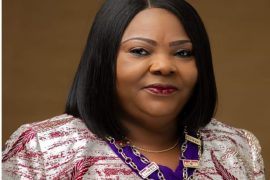I was speaking to a friend of mine whose mother is a farmer, and as one discussion led to another we found ourselves talking about how a bag of fertilizer mean so much to her mother than a piece of brand new wrapper.
I was stunned because I used to know that women in the villages cherished their traditional attires more than many other things you could mention, so when did that change?
Then it was clear, it changed when a bag of fertilizer became more expensive than five pieces of native wrapper put together.
This is outrageous seeing that about 75 percent of the world’s low-income earners reside in the rural areas, and a large number of them are dependent on agriculture as means of livelihood, so the question goes; how do they survive since one bag of fertilizer is about $30?
Fertilizer is a synthetic or natural supplement used by farmers on soils and plant tissues to add nutrients to the crop and help them grow amidst environmental challenges. This is a kind of sustainable agriculture, practiced by most farmers in order to produce food without affecting the environment as well as the surrounding ecosystem.
Fertilizer is as important in farming as the seed that is to be planted, and as we continued further in our discussion my friend mentioned that her mother has more than seven farmlands and each land consumes nothing less than two bags of fertilizer then I paused for a second to do a gross calculation in my head on how many bags she will be needing in total.
I was shocked knowing that the family may not be able to afford it. In the same vein, there are about 500 million smallholder farms in the world, and most of them grow their crops on less than two hectares of land, therefore following the global demand of food crops, sustainability level for farmlands must be at its peak.
However, we do not see that necessity becoming a priority all we see is minimum attention paid to the importance of subsidizing the amount of fertilizer all over the world and especially in low and middle-income countries.
This should be more than a priority considering the fact that women constitute the large percentage of the world’s total number of farmers and majority of these women are from the rural areas. The role of women in agriculture is fundamental and can never be overemphasized; any attempt to undermine the role of women in the sector is equal to hunger and starvation. Globally, they make up over 40 percent of the sector’s labor force.
This is significant even though their participation differs across and within countries and regions, from 20 percent in Latin America to 50 percent in parts of Africa and Asia. However, their inputs and achievement have catapulted the sector’s competitiveness into a higher pitch. But the bottom line remains that small-scale women farmers are still constrained by various limitations that restrict them from making equal inputs.
One of these is the high price of fertilizer.The constraint of the cost of fertilizer for small-scale women farmers is faced at the early stage of cultivation.
This stage is crucial because it determines the output. Having had access to lands and seeds to plant, the woman-farmer must help the plant to grow well in order to avoid low output. But when she is limited by some unavailability that makes her effort futile, it makes the whole system deteriorate.
My candid solution is simple; the government should subsidize the price of fertilizer thereby making it as affordable as a packet of sweet.
Why is this important? It is important because the whole world must feed, and if the world must eat, the woman in agribusiness must succeed. Therefore, it is important for the government and private investors to begin to look into reducing the price rate of fertilizer for the woman in agribusiness.
So as to:
- Increase the amount of food supply in the world.
- Increase the income of rural women farmers.
- Encourage more women to join the agribusiness.
- Raise the standard of living of every woman in agribusiness.
- Prevent erosion problems and avert environmental decadence.
- Reduce farmland nitrogen losses and increase its efficiency.
- Boost the global agriculture sector.
The Sustainable Development Goal that is focused on “ending poverty in all its forms everywhere” may seem unachievable if the prices of essential commodities to the poor are inaccessible.





Comments are closed.